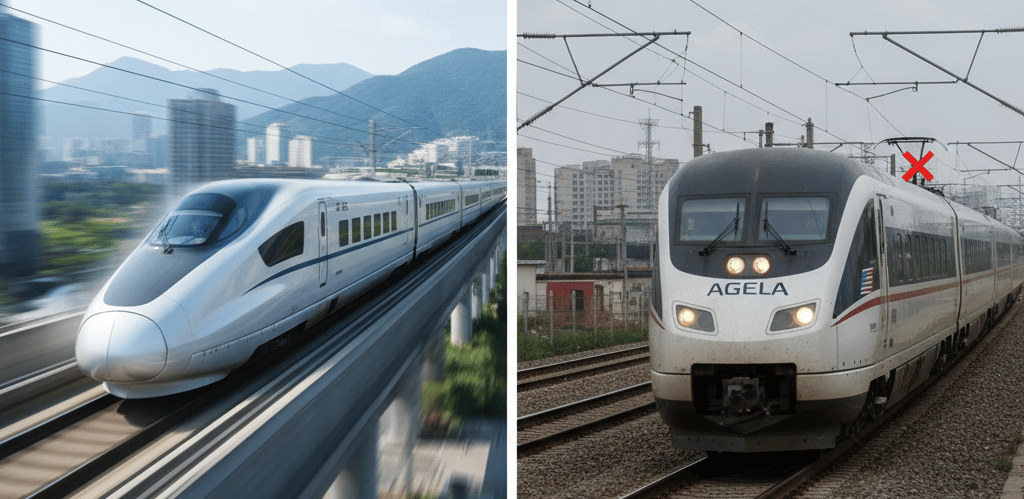China vs USA Bullet Train — A Race Between Speed, Innovation, and Vision
Discover how China built the world’s fastest train network while the USA struggles to catch up. A race of technology, ambition, and vision. China vs USA bullet train.
TKC
10/26/20252 min read


🚄 China vs USA Bullet Train — A Race Between Speed, Innovation, and Vision
🌏 Introduction
(Image: High-speed bullet train in China with futuristic skyline in the background)
When it comes to high-speed rail, no rivalry defines the modern age better than China vs the United States.
Both nations represent two different visions of progress — China building futuristic train networks that connect cities like veins of innovation, and the USA still debating how fast the future should move.
In this post, The Asia Guide explores the dramatic contrast between the world’s fastest railway nation and the world’s richest country, still stuck on the tracks. Before travelling to China, buy an Airalo eSim and get US$3 off now!!! Use the code TRT6696
🚄 China — The World’s Fastest Railway Network
China’s high-speed rail revolution began just two decades ago. Today, it’s a global marvel:
Over 45,000 km of high-speed rail lines — the largest network in the world.
Trains regularly run at 350 km/h, and experimental models reach 600 km/h using magnetic levitation (Maglev) technology.
Cities like Beijing, Shanghai, Chengdu, and Shenzhen are connected by sleek, punctual, and affordable bullet trains that make air travel look outdated.
China’s secret is consistency and national planning. The government views railways not as luxury projects but as a foundation for economic growth, urban development, and social equality.
🇺🇸 USA — The Land of the Slow Train
While China redefined travel, the United States — once the world’s engineering pioneer — has fallen behind.
America’s fastest train, the Amtrak Acela Express, runs between Boston and Washington, D.C. at an average of only 130–150 km/h, slower than some Chinese commuter trains.
Projects like California High-Speed Rail and Texas Central remain under construction or political debate.
The reasons? Complex land ownership, high costs, and fragmented decision-making.
In short, the USA has the money and technology — but not the momentum.
⚙️ Technology Comparison
Feature 🇨🇳 China 🇺🇸 USA Fastest Train Shanghai Maglev (600 km/h) Amtrak Acela (240 km/h) Average Speed 300–350 km/h 130–150 km/h Network Length 45,000+ km < 1,000 km Technology Maglev, AI signaling, green energy Diesel-electric, limited automation Affordability Low-cost, mass travel High ticket prices, limited routes
🌉 Beyond Speed — Vision and Connectivity
What truly separates China from the USA isn’t just the trains — it’s the vision.
In China, bullet trains connect not just cities, but economies. They boost trade, tourism, and even social mobility by linking rural and urban regions.
Meanwhile, the U.S. still relies heavily on cars and airplanes — industries deeply tied to fossil fuels and outdated infrastructure.
🌍 The Future of Travel
China is already testing next-generation Maglev lines, aiming for autonomous, AI-driven trains that can connect megacities in minutes.
In contrast, the U.S. is still debating funding, environmental impact, and political feasibility.
The real race is no longer just about trains — it’s about which nation can move faster toward a sustainable, connected future.
✨ Conclusion
China’s bullet trains represent the future — fast, green, and intelligent.
The U.S. represents potential — powerful, but trapped in delay.
In this race between innovation and indecision, the tracks of the future are already laid — and they lead straight through China.
🎥 Watch the Short Video
“China vs USA Bullet Train — Who’s Winning the Race?”
👉 https://www.youtube.com/shorts/8xodekbG-zY